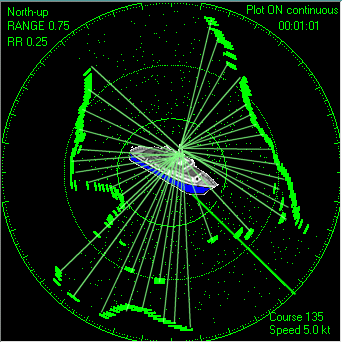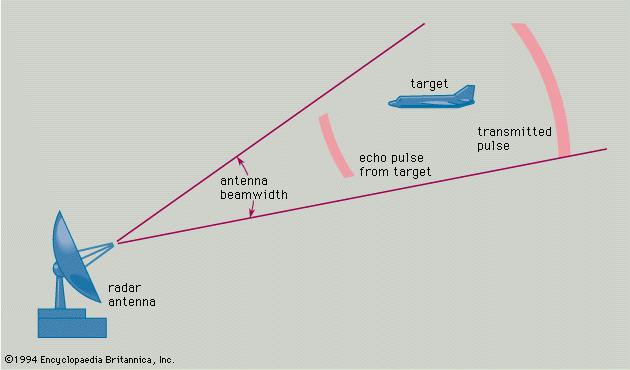Radar is an electromagnetic system for detection and location of reflecting objects such as aircraft, ships, spacecraft, vehicles, people, and the natural environment. It operates by radiating energy into space and detecting the echo signal reflected from an object or target. The reflected energy that is returned to the radar not only indicates the presence of a target, but by comparing the received echo signal with the signal that was transmitted its location can be determined along with other target related information. Radar can perform its function at long or short distances and under condition impervious to optical and infrared sensors. It can operate in darkness, haze, fog, rain, and snow. Its ability to measure distance with high accuracy and in all weather is one of its most important attributes. A transmitter generates an electromagnetic signal that is radiated into space by antenna.
A portion of the transmitted energy is intercepted by the target and reradiated by in many directions. The reradiation directed back towards the radar is collected by the radar antenna, it deliver it into a reliever. There it is processed to detect the presence of the target and determine its location. A single antenna is usually used on a time shared basis for both transmitting and receiving when the radar waveform is a repetitive series of pulses. The range or distance to a target is found measuring the time it takes for the radar signal to travel to the target and return back to the radar. The targets location in angle can be found from the direction the narrow-beam width radar antenna points when the received echo signal is of maximum amplitude. If the target is in motion there is a shift in the frequency of the echo signal due to the Doppler Effect. This frequency shift is proportional to the velocity of the target relative to the radar; it is also called radial velocity. The term radar is a contraction of the word radio detection and ranging. The name reflects the importance placed by the early workers in this field on the need for a device to detect the presence of a target and to measure its range. Although modern radar can extract more information from a targets echo signal than its range, the measurement of range is still one of its most important functions. There are no competitive techniques that can accurately measure long ranges in both clear and adverse weather as well as can radar.

Once a signal is radiated into space by radar, sufficient time must elapse to allow all echo signals to return to the radar before the next pulse is transmitted. The rate at which pulse may be transmitted, therefore, is determined by the longest range at which target are expected.





























